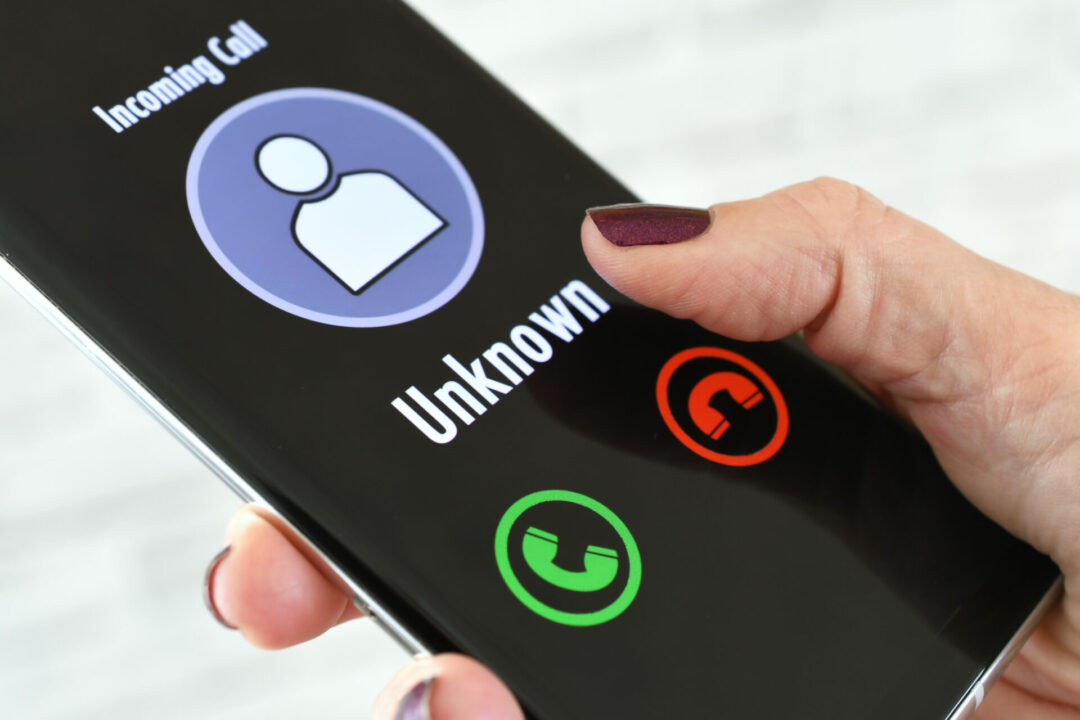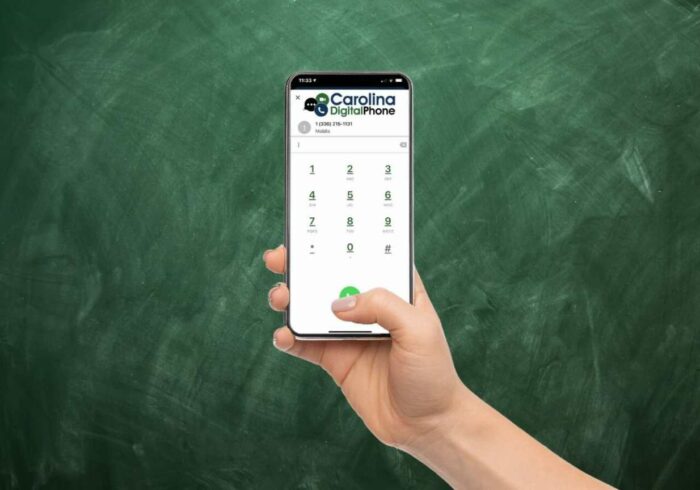Have you ever faced the frustration of your genuine business calls being flagged as potential spam? It can happen to anyone, but the good news is that there are simple solutions to address this issue. At Carolina Digital Phone, we understand the challenges of managing phone calls and we want to help you find a solution.
The first step is to contact call-blocking apps and request a review of your business number. Provide evidence of its authenticity, such as customer testimonials or public listings, and inform them of the impact on your business. Many call-blocking apps are willing to resolve these issues and reinstate your number.
What Qualifies as Spam?
Spam is any unwanted or unsolicited communication, most often in the form of electronic messages such as emails or phone calls. These messages are usually sent in bulk and can be troublesome or even dangerous. When it comes to phone calls, spam may be in the form of robocalls or telemarketing calls that seem to come out of nowhere. These calls can be disruptive to our daily routine and may even lead to potential scams. However, not all spam calls are necessarily malicious. Sometimes, legitimate businesses or organizations may be flagged as potential spam simply because their call patterns may resemble those of spam calls.
This can be frustrating for both the business trying to communicate with their customers and for the customers themselves. Fortunately, there are some simple solutions to this problem. Businesses can ensure that they properly identify themselves when making phone calls, and customers can add these numbers to their contacts or call lists to prevent them from being flagged as potential spam. Additionally, using call-blocking apps or features on your phone can help filter out unwanted calls while still allowing legitimate ones to come through. By being aware of the issue and taking proactive steps to address it, both businesses and consumers can minimize the impact of potential spam calls and ensure that important and legitimate communications are not ignored or overlooked.
What is the Cause?
Fraudulent and spam phone calls have become more common in the digital age. To help identify and block these calls, carriers use the SHAKEN/STIR protocol to authenticate and verify caller ID information. However, this can lead to legitimate calls from businesses being flagged as spam.
Carrier spam features and apps, such as Scam ID and Scam Block services, use technical triggers and algorithms to detect potential spam calls. While these tools are effective in filtering out unwanted calls, they can sometimes mistakenly label legitimate calls as spam.
The increase in fraudulent and spam phone calls can be attributed to the advancement of technology and the ease of making unsolicited calls. However, despite these challenges, there are simple solutions to combat this issue. By staying informed about the SHAKEN/STIR protocol and utilizing carrier spam features, individuals can effectively reduce the number of spam calls they receive. Although the increase in unwanted calls may be frustrating, it is comforting to know that there are effective measures in place to prevent them.
Don’t Get Labeled for Spamming
Are your important business calls getting flagged as potential spam? It’s frustrating when legitimate calls from businesses get labeled as spam, but there are practical strategies to ensure that your calls stand out and are recognized as important.
One key strategy is Caller ID authentication, which verifies your phone number and helps to establish trust with the person you are calling. This can increase the likelihood of your call being answered and prevent it from being mistakenly labeled as spam.
Another important consideration is fine-tuning call frequency. If you are making a high volume of calls in a short period, this could trigger spam filters. By spacing out your calls and avoiding rapid-fire dialing, you can avoid raising red flags and increase the chances of your calls being recognized as legitimate.
Optimizing call content is also crucial. Make sure your calls are personalized and relevant to the recipient. Include specific details about the purpose of your call to demonstrate that it is not a generic spam call.
By implementing these strategies, you can increase the chances of your important calls being recognized and answered, and avoid the frustration of being labeled as potential spam.
1. Verify Your Caller IDs
It’s important to verify your caller IDs and ensure that your business name or number is consistent when making outgoing calls. This helps to prevent your legitimate calls from being flagged as potential spam. By verifying your caller ID, you can establish trust with your customers and ensure that they recognize your number when you reach out to them.
In addition, sharing information about the businesses you call or that call you is essential. By providing feedback on caller ID information, you can help to identify and block spam calls, while also helping to validate legitimate businesses.
Caller ID authentication is a powerful tool for preventing calls from being labeled as spam. By authenticating the caller ID, businesses can ensure that their calls are accurately identified and not mistaken for spam.
By taking these simple steps to verify caller IDs, share information, submit feedback, and utilize caller ID authentication, businesses can help prevent their legitimate calls from being mistakenly flagged as spam. This not only benefits the businesses themselves but also ensures a more reliable and positive experience for their customers.
2. Register Your Numbers
If you find that legitimate calls from businesses are getting flagged as potential spam, there are some simple solutions to this issue. One option is to register your phone number with a free caller registry, such as the National Do Not Call Registry (https://www.donotcall.gov/) or other similar services. By doing so, you can reduce the number of unwanted spam calls you receive while ensuring that legitimate businesses can reach you without being mistaken for spam.
In addition to free caller registries, it’s also a good idea to look into state do-not-call lists. Contact your state’s Public Service Commission or consumer protection office for information on statewide do-not-call lists and how to register your number. This can provide an added layer of protection against unwanted calls and help to ensure that legitimate businesses can reach their customers without interference.
By taking advantage of these resources, you can help to ensure that your phone calls from legitimate businesses are not mistakenly flagged as potential spam by carriers and that you can receive important communications without interruption.
3. Use a Verified Business Number
Is your legitimate business outreach getting flagged as potential spam? It’s a common problem, but there are simple solutions to ensure your calls are recognized as legitimate. One effective solution is to use a verified business number for all your outbound calls.
First, obtain a verified business phone number associated with your organization. This verified number will display your business name on the recipient’s caller ID, increasing the chances that your calls will be answered. Additionally, consider using several business phone numbers to reduce the likelihood of being marked as spam. By using multiple numbers, you can divide outbound calls and protect your official business or personal numbers from being flagged incorrectly.
Having a verified business number and multiple phone numbers has several benefits. It not only reduces the risk of your calls being mistaken for spam, but it also gives your recipients confidence that they are receiving a legitimate call from a trusted business. This can potentially increase answer rates and improve the effectiveness of your outreach efforts.
In conclusion, using a verified business number and multiple phone numbers is a simple yet effective way to reduce spam flags and protect your official business or personal numbers. By taking these steps, you can ensure that your legitimate calls are received positively and have a greater impact.

Call Frequency and Patterns
One of the main reasons legitimate business calls get flagged as potential spam is due to call frequency and patterns. If a business makes a large number of calls in a short period or follows a certain calling pattern, it can trigger spam filters. For example, telemarketing campaigns or sales teams that make a high volume of calls may inadvertently trigger these filters, causing their calls to be marked as potential spam. This can be frustrating for both the business trying to make legitimate calls and the recipients who may miss important information.
1. Avoid Rapid-Fire Calls
Avoiding rapid-fire calls is essential to ensure that your legitimate business calls don’t get flagged as potential spam. When making calls, it’s important to resist the urge to repeatedly call the same recipient within a short timeframe. Rapid-fire calls can trigger algorithms that mark your number as suspicious and potentially block future calls.
To protect your numbers and prevent them from being blocked, consider using Caller ID Reputation services and registering your numbers with CNAM (Caller ID Name). These strategies can help improve the reputation of your phone number and reduce the likelihood of it being flagged as spam.
Additionally, it’s crucial to follow ethical guidelines and properly configure your dialing software when making calls. Ensuring that your calls are compliant with regulations and guidelines can help prevent them from being blocked and improve the likelihood of reaching your intended recipients.
By taking these simple steps, you can help ensure that your legitimate business calls are not mistakenly marked as spam and that you can continue to effectively communicate with your customers and prospects.
2. Space Out Calls
As a digital phone service, it’s important to recognize that sometimes legitimate calls from businesses can get flagged as potential spam. However, there are simple solutions to avoid this issue and ensure that your outreach efforts are successful.
One effective strategy is to space out your calls to avoid a consistent barrage of outreach. By spreading out your calls over a longer period, you can reduce the risk of them appearing spammy and increase the likelihood of them being answered by the receiver.
In addition to spacing out calls, it’s also helpful to use a combination of calls, emails, social touches, and texts as part of your outreach cadence. This variation in communication methods can help to keep your outreach efforts fresh and engaging, while also reducing the risk of your calls being flagged as spam.
It’s also important to avoid consistently calling back numbers with considerable frequency over a short period. By following these simple guidelines, you can reduce the risk of your calls appearing spammy and increase the success of your outreach efforts.
Moving Forward
On the horizon, the rollout of rich call data (RCD) to the public, will go a long way to removing inconsistencies throughout the industry. In the meantime, keep an eye on how your business phone number shows. This should be checked across multiple devices and carriers and will help you keep on top of the potential issues. It is crucial to avoid having your number flagged as SPAM. Carolina Digital Phone is constantly keeping abreast of the latest in call authentication and security to ensure our customers receive the best possible service. If you have any questions, please call us at (336) 544-4000.




